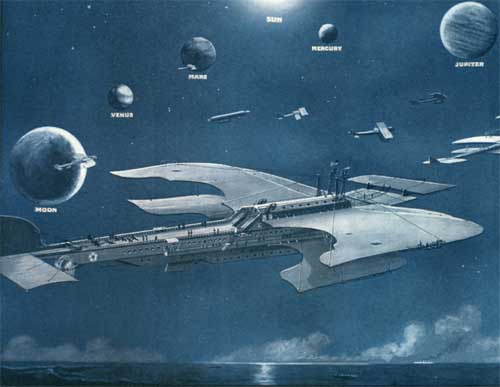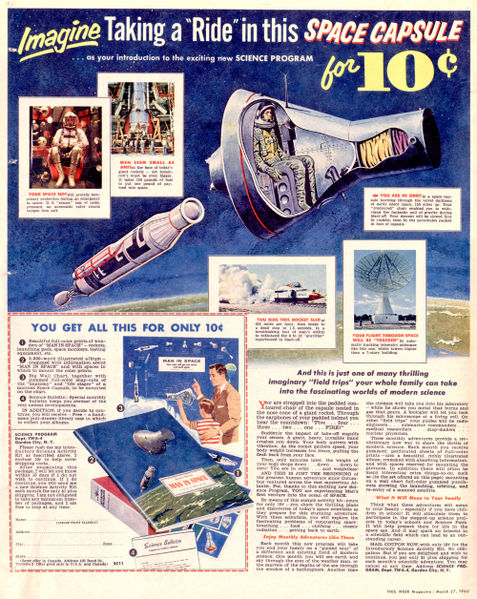
Steam-Powered Space-Ships, 1918.


 In 1960, you could drop a dime in the mail and get yourself some genuine space-flight experience! The Science Program was a subscription service, delivering a booklet devoted to a single subject each month. Ten cents was the introductory offer, but future booklets cost a dollar (plus shipping). Subscribers also got posters, star-charts, and other helpful activities to help teach about the varied topics, from nuclear power to cartography.
In 1960, you could drop a dime in the mail and get yourself some genuine space-flight experience! The Science Program was a subscription service, delivering a booklet devoted to a single subject each month. Ten cents was the introductory offer, but future booklets cost a dollar (plus shipping). Subscribers also got posters, star-charts, and other helpful activities to help teach about the varied topics, from nuclear power to cartography.
Take a close look at the date, though: this advertisement was printed on the back of the 27 March 1960 edition of This Week magazine…a full year before the USSR and USA launched their respective manned spaceflights. The potential for wild speculation and amateurish writing was ripe, but the Science Service was above such things. Established in the 1920s, the Science Service was a newswire for scientific thought, sponsored and edited by scientists for accuracy and clarity to the layperson. These booklets were carefully written for accuracy, as much information as they had in the 1960s, and certainly inspired the minds of today’s scientists and engineers. That is, if their parents could come up with a buck a month to keep the sticker books coming.